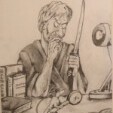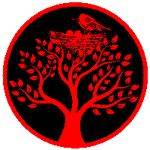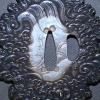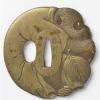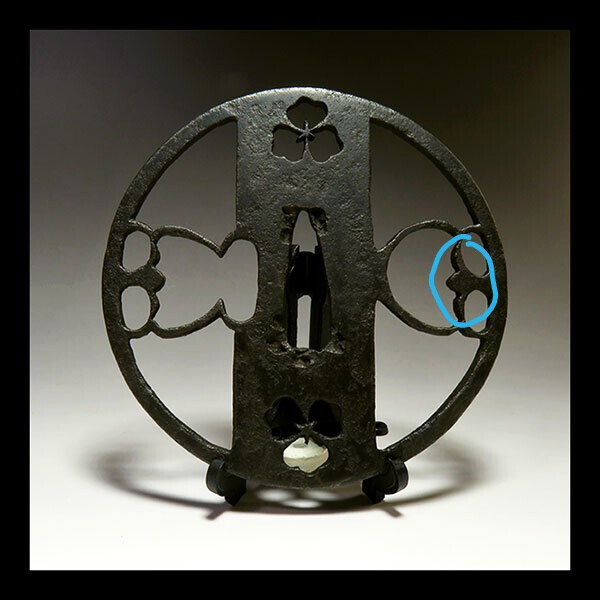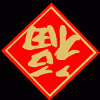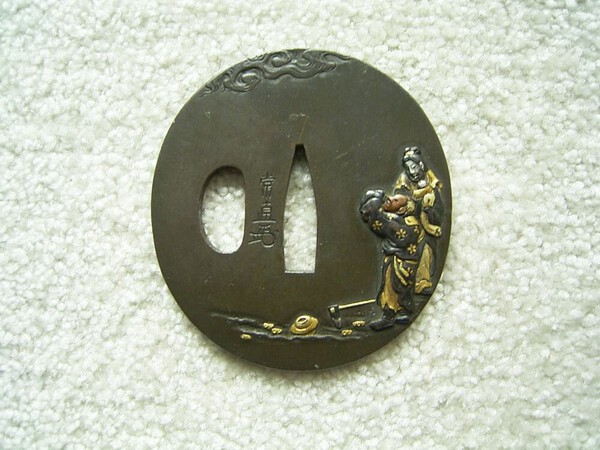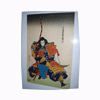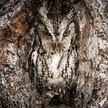Leaderboard
Popular Content
Showing content with the highest reputation on 12/26/2020 in all areas
-
The correct way to store a blade is in a shirasaya. It offers the best protection for the sword. If you have a koshirae for the sword this should be held on a tsunagi. One often sees a blade in shirasaya and it's koshirae displayed on the same stand. Storing in a koshirae, especially an antique or vintage one can be risky. The saya is more likely to have been outside and subject to harder use than a shirasaya and is therefore likely to have dust or other contamination within it which could scratch or promote rust. A blade in good polish should be held in a shirasaya. period.2 points
-
Congratulations Daniel. It is a nice blade in itself, the pass of Juyo only confirms its quality2 points
-
It’s a hard one to date as this type of blade was made in every period and there are few details visible. Sticking a finger in the air I’d guess late koto to early Shinto (1550 to 1650) based on the colour of the patina on the tang, but it’s only a guess and other views could be equally valid. 100$ isn’t much money and you’ll get that back if you sell it so I don’t think you have too much to lose. Maybe working on it with uchiko will bring up the detail and give you something to go on research wise.2 points
-
The Yoshioka Ichimonji passed this year's Juyo session, I still plan to sell it, but it won't be available until June 2021 when it is released from NBTHK. Will post again on NMB when the time comes. The Inoue Shinkai wakizashi is still up for sale and I can provide a better discount if anyone is keen.2 points
-
A careful examination of the enlarged images shows quite clearly that this is a modern cast copy. Steel casting with electroplated details in silver and gold on an initial copper flash plating. The copper base plating is typical of industrial processes, it adheres well to the steel so that the silver and gold has an easier bond to the copper rather directly onto the steel.2 points
-
Ciao Luca, "gan no nami" sounds like a genitive case. I suppose that simply gan nami or gan ni nami (雁に波) should be the correct form (but let a true expert in Japanese chime in). See: https://artsandculture.google.com/asset/雁に波文皿 肥前焼・-柿右衛門様式-plate-with-geese-and-waves/-AH96HQsuwb9nQ Love your Heianjō findings.1 point
-
If you are concerned about damaging a blade (or just making mistakes) when going from shirasaya to koshirae (and back), then with all due respect you are not ready to own a nihonto. Do you have a club nearby, where someone with more experience could help you in person? Please read the material that Grey shared in this thread, as it is the bare minimum you should master if you are going to own a nihonto. Most “iaido” schools are not going to teach you what you need to know in order to properly handle a sharp sword, much less a real Japanese blade. An antique nihonto should not be stored or displayed in koshirae.1 point
-
Hi Faust, welcome to the board. Should you have a blade in shirasaya, I would suggest to let it in that way. Shirasaya is protecting the blade against all injuries and air attacks especially if you are in a salty atmosphere (close to a sea shore for instance). Regards Bruno1 point
-
Marsel, I have noticed a lot of blades collected in Southeast Asia have suffered quite a bit from years of heat and humidity. Such massive corrosion makes it difficult to say much. I'm puzzled by the area I've enlarged here. Is it just corrosion that has been smoothed over? The whole thing seem really poorly made, and maybe even not finished, like Uwe mentioned about the habaki. The saya is made to be leather covered, but the covers often are missing. My first gut feel makes me think of an article someone posted about POWs being forced to make swords. It looks Japanese, but, to me looks crudely made and unfinished. Here's the story:1 point
-
Somebody in Germany tried to sell me another example of the rooster Tsuba which was exactly like that in the Bonham's auction and he even told me that it was the Bonham's piece, he won the auction. In fact it was just another copy of that. I had it in hand and on the first glance it looked okay, but on the second I could see that it was not made by a tsubako, no traces of chiseling, no nuances, no traces of wear or age - anything very lifeless, very industrial. But it was nearly perfectly made, don't underestimate the fakers, and I think without a lot of experience someone will easily step into that trap.1 point
-
1 point
-
I am aware that the sword is in rather bad shape but it costs about 100 USD so maybe this deal is not that bad.1 point
-
Yas. Good work, there is a growing list of these 'good fakes'. We really must make a comprehensive list to avoid falling for them. If I had paid £ 2,125 (AU$ 3,795) to a bona fide auction house for that $20 replica I would be very, very unhappy! Grev. I personally think your example has a more pleasant visage of the man, certainly less surprised! [Authentic or not]1 point
-
Hi Tony, Swords are very much like ladies: wait a couple of minutes and there will be a more attractive one passing by. Keep your money in your pocket, check out the sales section on here and what other dealers have and you'll have a better idea of what you can get for your money and a better appreciation of what you're getting.1 point
-
Hi Tony, this looks original but there are many, many problems with it. Best to avoid this one, it has been "polished" by an amateur, the Habaki is not original and there are a number of flaws visible. Save your money, no matter how cheap it is.1 point
-
What is now clear is that this is a genuine sword, made around WWII and in nice mounts. All the best with your bidding!1 point
-
1 point
-
Merry Christmas and happy Boxing Day ! First, I mixed up two seppa from another blade, a Takeuchi Kunihiko, that has identical fittings but is a larger blade. All the Kunikane fittings are stamped 79 even the inside of the fuchi. I found no armory acceptance stamps on any of the parts. I'm certain the military fittings were made for this blade. As for its provenance, Don Whitehead discovered it and I subsequently purchased it from a gentleman who said he'd obtained it as part of a payment for a diamond. There was a second blade as well. It was in a D guard obviously old, and I've always wondered if it was the real treasure. As you can see in the photo, the habaki was made with two ears that fit into the groves in the blade. Someone took great care in its construction and must have had the blade in hand. Jim1 point
-
An image that proves your opinion. ↓As you can see, no translation is needed. https://twitter.com/yakozen777/status/11954669202810388481 point
-
A day spent first with one set of in-laws, and then later a visit at my mother followed by 2 hours at the dog park so the Shiba can have a good Xmas too....I'm running on empty. Barely have the energy to type. But avoid that Witblits if you can....translates to "White Lightning" and is just as fatal Most countries have their own version...a'la Firewater or Moonshine or.....1 point
-
Hello, I bought a tsuba at an auction. The signature is from Tsunenao, Ichinomija school Kyoto. At what time did the artist work?, are there other pieces by this master as a comparison ? with what price can the tsuba be valued? I have found nothing in my literature or on the internet. Thank you for the welcome to the NMB. Uwe1 point
-
Hi Uwe, I was a bit rushed yesterday so here is a bit more info. Firstly, if you want to seriously study Edo period toso-kinko artists I must recommend Markus Sesko’s book, published by Lulu books (each one is printed to order). Bonhams have the Edward Wrangham Collection catalogues on-line under results. He had a lot of Ichinomiya tsuba ‘signed’ Nagatsune. The description for Lot 15 in Part I was: Ichinomiya School, early 19th century Of oval form, inlaid with three rats and a daikon in gold, silver and shakudo takazogan, signed Tsunenao with kao. 6.1cm (2 3/8in). Sold for £1080 The rat and two legged daikon are associated with Daikoku, one of the seven gods of good fortune. I bought three tsuba in one lot in Part IV and one of these was inscribed as a joint wotk by Nagatsune and a student, Sadanaka. I had not noticed before your post, but Sesko says Kyubei Tsunenao originally came from Takatsuki in Settsu province and ‘Haynes lists this kinko artist as the same person as Sadanaka’ Then cast doubt that they are the same person. I don't know which is right. Anyway, out of interest, I also post my tsuba and my inventory notes for this supposedly joint work (I never say any of my tsuba signatures are genuine as there are many forgeries out there and I’m no expert). An oval shibuichi tsuba inlaid in iroe takazokan with a peasant falling back, waving his arms, as a bird flies away, having scared the peasant or stolen some of his food. The reverse shows two shapeless lumps (potatoes?), one of which is on a vegetable grater. The tsuba is signed Echizen no Daijo Nagatsune [horu i ko?] Sadanaka kore o horu (Sadanaka carved this) with kao. Nagatsune (1721-1787) was the first generation successor to the two founders of the Ichinomiya School in Kyoto (Nagayoshi of the Ichinomiya family [school?] and Takanaga of the Yasui family). Nagatsune is recorded as the adopted son of the guilder Nagayoshi and a student of Takanaga. His personal names seem to have been Chuhachi and Ganshoshi and he signed his work as Echizen no Daijo Nagatsune (as this example) or Echizen no Kami Nagatsune. Sadanaka, personal name Banryuken of the Iwamoto family, was one of eight recorded students of Nagatsune. The phrase ‘Sadanaka kore o horu’ translates as ‘Sadanaka carved this’, indicating that this was a joint master and student piece, possibly when Nagastune was getting old, not as skilful, but still retaining the reputation as master. The end part of Nagatsune’s signature (not read by Bonhams) may read horu i-ko and translate as something like ‘carved again with’ indicating that Nagatsune and Sadanaka often worked as a team. Provenance:Edward Wrangham Collection. Lot 17 (with two other tsuba) from Part IV of the sale of this collection at Bonhams, Bond Street, on Wednesday 6 November 2013. Height: 6.8 cm, Width: 6.1 cm, Thickness: 0.3 cm, Weight: 91 g Best regards, John1 point
-
1 point
-
Dear Piers, I have always appreciated the natural beauty of nature. I suspect that the stock, in this case, was quarter sawn to achieve this look and compliment the item as a whole. Very nice. Thanks foe your response,1 point
-
No - I didn't even like the fact that the auction house had the blade sitting on an uncovered, sliced up, plastic table! Although, I apparently need to find a new background for natural light photos, as that concern seems to be proposed every time I post a photo. 🙂0 points



